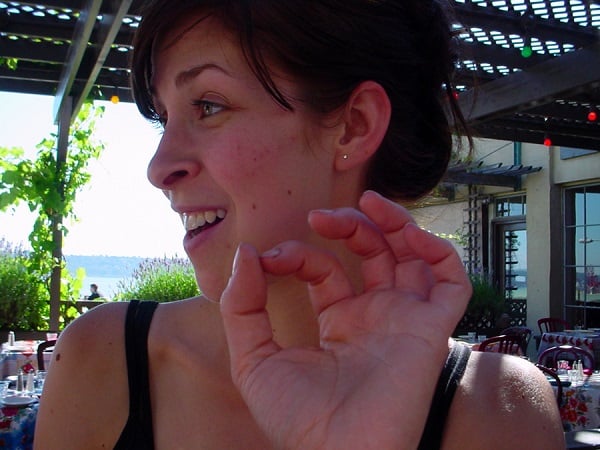6 Hand Gestures and What They Really Mean
While the spoken language is a huge part of the manner in which we humans communicate, it’s not the sole, or most important way we speak to one another. You’ve probably noticed that you don’t just use your words for communication, you speak with your entire body. Whether it’s through postures, hand gestures, or facial expressions, talking extends way beyond the spoken. Hand gestures in particular are a fascinating form of communication. You can say something to someone standing on the other side of the street without ever having to open your mouth, how amazing is that?
The only problem is, you can also insult a complete stranger if a familiar hand gesture means one thing to you but something completely different abroad. Make sure you have your bases covered so you don’t put your foot (or your hand) in your mouth. Check out these 6 hand gestures and what they mean when you go overseas.

Photo via Flickr
1. Thumbs up
This widespread hand gesture, where the fingers are gathered into a fist and the thumb is left standing upright, is generally looked at as a way to show approval. However, if you travel to certain parts of the Middle-East, a thumbs up is pretty much on par with giving someone the middle finger. And if you’re in Bangladesh you should be extra careful because a thumbs up is a sign that you’re taunting someone and looking to pick a fight.
2. Horns
This gesture, with the two middle fingers folded and the pinkie, index, and thumb erect, is a favourite for anyone with ties to the University of Texas and its football team, the Longhorns. You are probably more familiar with it as a sign used at rock concerts which means ‘rock on’. But in many Latin American countries it can be horribly offensive and if you use it you’re informing someone that their spouse or partner is ‘putting the horns’ (cheating) on them.

Photo via Flickr
3. Peace
People like to joke that the peace sign is particularly popular amongst photo-taking Asian tourists, but it’s actually pretty commonly used in most Western countries—although it doesn’t always hold the same meaning. In the U.S., the ‘V’ sign, with the palm facing outwards, was adopted by anti Vietnam War activists as a symbol for peace. Today, whether the palm is facing out or in, the symbol represents peace and victory. In the UK, Ireland, and Australia, on the other hand, the ‘V’ sign with the palm facing out does mean peace, but turn the back of your hand towards someone while doing the ‘V’ and you might as well flip them the bird too.
Learning Arabic? Check out our free Arabic placement test to see how your level measures up!
4. Time check
You wouldn’t think that something as simple as checking the time could be considered offensive, but in the Middle-East looking at your watch can have some negative connotations. While you might think it’s a casual gesture that indicates you don’t want to be late for your next appointment, in the Middle-East it’s a glaring sign that you don’t want to be taking part in the current conversation. In Arabic culture it’s important to let a conversation run its natural course and not rush it along!

Photo via Flickr
5. OK
Way back in the 1950s Richard Nixon paid a visit to Brazil and flashed the ‘Ok’ sign to a crowd of people. Apparently no one informed him that, while making your thumb and forefinger into a circle means that everything is ‘A-OK’ in pretty much every other country in the world, in Brazil it can be an incredibly offensive gesture. The OK sign is looked on as obscene and is yet another hand gesture whose equivalent is to give someone the middle finger in the U.S. Don’t be like that president of yore and tell your new Brazilian friends to go f*** themselves…just don’t.
6. The beard
When travelling in Belgium, France, or parts of Italy, be careful about scratching your chin with the tips of your outstretched fingers. While where you come from this gesture just means your neck is itchy, in other countries it’s a way to tell some to get lost, brush them off, or say no. The idea behind it is that the person using the gesture is showing if his (or her) masculinity in the same way a rooster might flare his comb. How this translates to ‘get lost’, I’m not quite sure, but it’s best to use it responsibly just in case.
Are you familiar with any hand gestures that have a completely different meaning in other countries? Share them with us!

